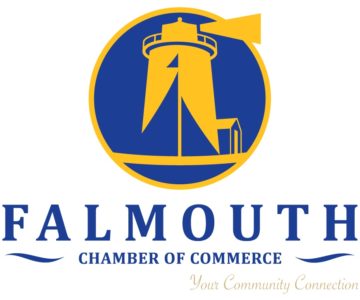By Douglas Karlson
After driving through a secluded and sylvan Plymouth landscape to arrive at A.D. Makepeace Company’s Redbrook Village, one arrives at what’s described as a “New England village, re-imagined.”
The focus is on the village green and surrounding nature. Homes and parking lots are tucked discretely behind trees and shrubbery. There’s a farmers market, café, fire pit surrounded by Adirondack chairs, boat launch, YMCA, playing field and basketball court.
A band plays on the green where residents have gathered for a “JamBEERee” to enjoy hotdogs, craft beer and a sense of community. Later in the afternoon, some will make their way to the Meeting House to watch the Patriots.
While the village conveys the idea of a traditional New England village with cottage-style architecture, the interiors of the homes reflect the layout preferred for contemporary lifestyles. Once completed, Redbrook will have 1200 homes – a mix of single-family houses, townhouses, duplexes and condos – situated on 1400 acres, three quarters of which will be undeveloped.
Redbrook represents many of the things civic leaders say are essential to a vigorous South Shore economy. These include an overall increase in the number of housing units, as well as developments that are clustered on a smaller footprint and located near walkable, vibrant neighborhoods close to convenient transit. It’s called smart growth, characterized by mixed-use communities with a strong sense of place and designed on a human-scale.
According to Peter Forman, President of the South Shore Chamber of Commerce, housing – innovative housing – is an imperative for economic growth. The chamber is working to foster desirable communities to attract a strong workforce, which in turn will attract businesses and fuel economic growth.
In 2016, the chamber released a plan for the region’s future economic growth called South Shore 2030: Choosing Our Future. The plan identified six goals: attract a younger workforce and be more welcoming to families, strengthen public and private collaboration, strengthen and retain existing businesses, promote start-ups and entrepreneurship, recruit new businesses to the region, and improve infrastructure.
Success of the plan will require many players working in the same direction, since the plan encompassed housing, commerce, transportation, and infrastructure.
Housing is one of the key components of the chamber’s strategy for economic growth, and recently, the chamber released South Shore 2030’s housing recommendations.
According to the report, housing inventory on the South Shore is too low, with the result that many young people, and young families, are priced out of the market.
The report says there are warning signs that current demographic trends will not lead to sustainable growth, but rather, could lead to a downward cycle of lost jobs, declining services and lower property values.
While the population of the South Shore ages, planners say more must be done to attract those in their early 20s and mid-30s. The theory is that developments located near vibrant neighborhoods and transit will attract young people who commute, and eventually attract companies looking to relocate near a strong workforce.
The chamber is seeking to work closely with private developers, community leaders and government officials to implement their housing plan recommendations.
The chamber’s agenda was created by a steering committee of housing experts like the Green Company of Pinehills in Plymouth. The chamber also reached out to others who are pioneering new approaches, including A.D. Makepeace Company.
“What we are recommending throughout the region are housing strategies that promote broader economic development. We are able to point to some exciting projects that were already underway in the region such as A.D. Makepeace’s Redbrook,” says Forman.
According to Michael Hogan, CEO of A.D. Makepeace Company, the largest cranberry grower in the world and the largest property owner in Eastern Massachusetts, Plymouth has long been open to the concept of higher density housing. He says the lessons learned in Redbrook can be applied to other communities. For innovative housing projects to be built, it’s important that local political and business leaders embrace the visions. Developers choose locations to develop based on confidence that the local municipality will be willing to approve the zoning, explains Hogan.
Plymouth has been doing a great job on housing with strong support from the Plymouth Area Chamber that has supported Redbrook, The Pinheills, Cordage Park and many other smaller projects, says Forman.
Many developers, like A. D. Makepeace Company, have long embraced the ideas outlined in the chamber’s vision. “We look at Redbrook as a case study,” says Hogan. “Our efforts predate the plan. We look on the plan as an endorsement of our plan.”
While the designs and locales vary, successful innovative housing developments often have one thing in common: a strong sense of place. 35 Rosebrook, a luxury rental building recently opened by A.D. Makepeace Companyin Wareham, offers residents beautiful views of the cranberry bogs, easy access to transit, and proximity to restaurants and local businesses.
Like Redbrook, the upscale Pinehills development offers a vibrant rural village surrounded by nature. Still other developments leverage the character of old schools or factories, or proximity to the shoreline. These include Union Point, an urban development 20 miles south of Boston, and Cordage Park, a former rope factory that is being converted into a mixed-use waterfront development in Plymouth.
The chamber’s housing report cites an estimate by the Metropolitan Area Planning Council that to achieve just one percent economic growth will require the creation of an astonishing 44,000 new homes, condominiums and apartments by 2030. But the report notes that construction of single-family homes and multi-family housing in the state is at its lowest point since the 1950s. At the same time, housing stock is among the oldest in the country.
It’s a concern shared by the Baker-Polito administration, which last year proposed an initiative to increase housing production in the state. The proposed legislation, An Act to Promote Housing Choices, would provide $10 million in incentives, grant funding, and technical assistance every year with the goal of creating 135,000 new housing units by 2025. The proposed law would eliminate the super majority required at Town Meetings to revise zoning laws for smart growth housing.
The reason for the proposal, explained Gov. Charlie Baker in his remarks in January to the state legislature’s Joint Committee on Housing, is that demand for housing exceeds supply, resulting in high prices. Young people, as well as seniors, working, and middle class families cannot afford to either buy or rent a home in Massachusetts.
It’s predicted that a greater supply and variety of housing will attract younger workers to the South Shore. Younger people, the theory goes, consume and spend more, and help make up for the declining spending of aging retirees. In addition, new housing provides a downsizing opportunity for baby boomers who will therefore remain in the region and contribute to the workforce. Their larger homes will then be available for expanding younger families.
Currently, says Forman, many “empty nesters” are reluctant to downsize because housing options are limited, which creates a gridlock effect in the housing market.
“We cannot build a strong economy or vibrant communities simply by aging in place and discouraging younger people from coming to Massachusetts or the South Shore,” writes Forman.
Forman says it’s important that local officials recognize the demographic shifts taking place, rather than fear a replay of the urban flight of the ‘70s and ‘80s that led to rapid growth of single-family housing and strained local services. Forman notes that most of the South Shore is currently seeing declines in school enrollment.
The town of Plymouth has long been committed to increasing its housing stock. According to Lee Hartmann, Director of Planning and Development for the Town of Plymouth, his town has seen consistent growth in housing since the 1970s. That pressure to create more housing is due to the fact that Plymouth is “a very desirable place to live,” he says. It’s also more affordable than many towns to the north.
Forman agrees, observing that Plymouth is close enough to the greater Boston area, and land is available and less expensive compared to Boston, where he says the market is overheated and expensive.
“The fact that you can find a new home in the mid-three’s appeals to young people and to empty nesters,” agrees Hogan.
Even in the slow years of the Great Recession, Hartmann observes, the town still averaged 150 new homes per year. The town requires that at least 10 percent of all homes built be affordable – that is, affordable for the local workforce. (He notes that a family of four with a household income of about $80,000 qualifies for affordable housing.)
“Plymouth is probably the fastest growing town in the Commonwealth in terms of housing.” He describes the housing as mixed, with single-family houses, apartments and condos. Hartmann sees strong demand for multi-family housing, and notes that phase one of Cordage Park recently began, which will result in 155 apartments. Eventually, the development is slated to have a mix of many more homes.
“The town has always recognized the need to be flexible and the need for different types of housing in the community,” says Hartmann.
In 1620 the first European-style village was built in Plymouth. It looks like Plymouth may once again be leading the way when it comes to innovative housing in the Commonwealth.
Plymouth Seeks to Invigorate Economy with Innovative Housing





















